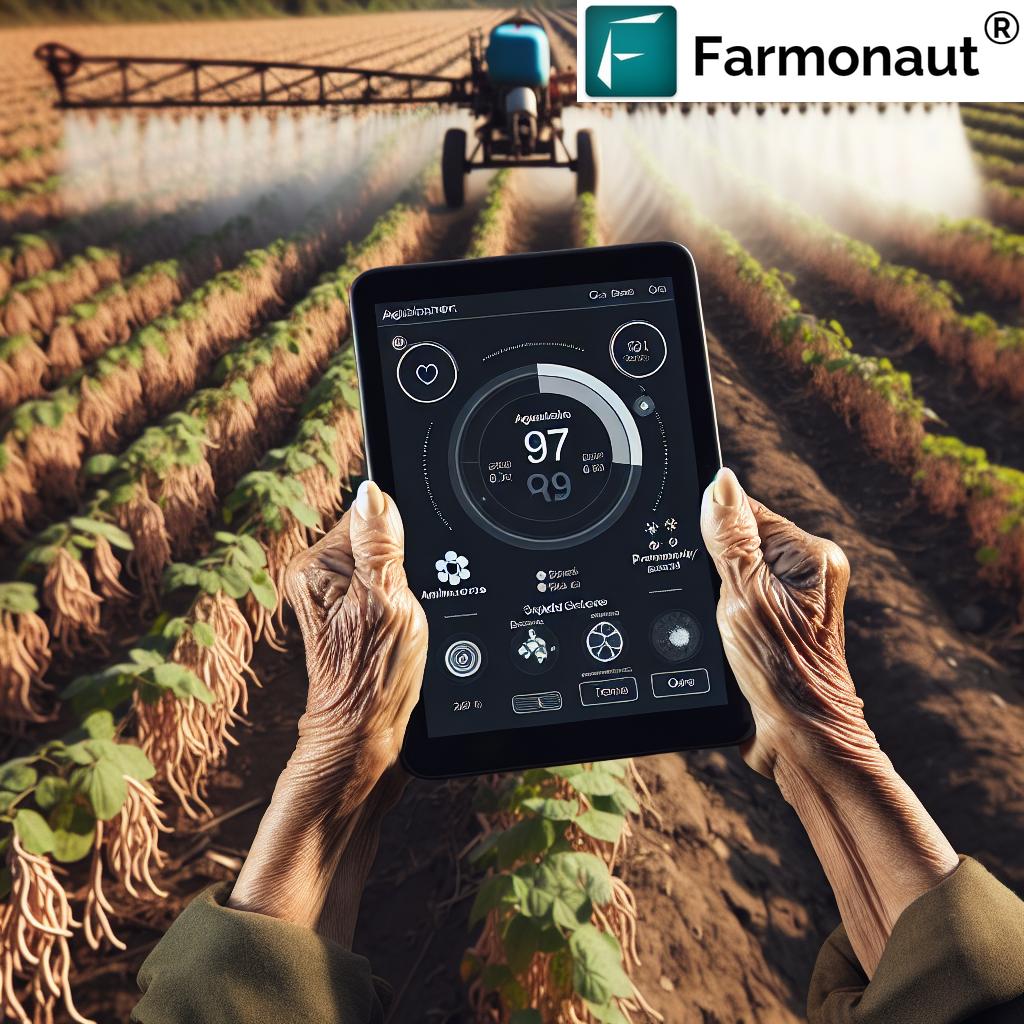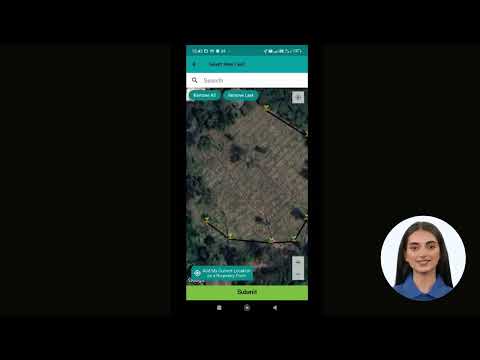Revolutionizing Ontario’s Crop Management: Precision Agriculture Insights for Fungicide Application and Disease Control
“Ontario’s precision agriculture techniques can reduce fungicide use by up to 30% while maintaining crop health.”

Welcome to our comprehensive guide on revolutionizing crop management in Ontario through precision agriculture insights, with a focus on fungicide application and disease control. In this blog post, we’ll explore the latest agricultural news, market insights, and innovative farming practices that are transforming the way we approach crop health and yield optimization.
As we delve into the world of modern agriculture, we’ll uncover cutting-edge strategies for managing various crops, including dry beans, soybeans, wheat, and corn. Our journey will take us through the intricacies of combating prevalent diseases such as anthracnose, white mould, and soybean cyst nematode, while also exploring sustainable farming techniques and the role of precision agriculture technologies in enhancing economic returns for growers.
The Landscape of Ontario’s Agriculture
Ontario’s agricultural sector is a cornerstone of the province’s economy, with diverse crops contributing to both local and global markets. As we navigate through the challenges posed by changing weather patterns, evolving pest pressures, and market demands, it’s crucial to stay informed about the latest developments in crop management and disease control.
Let’s begin by examining some of the key factors influencing Ontario’s agricultural landscape:
- Climate variability and its impact on crop cycles
- Emerging diseases and pest pressures
- Market trends affecting crop selection and management strategies
- Advancements in seed genetics and fertilizer technologies
- The growing importance of sustainable and precision farming practices
Precision Agriculture: A Game-Changer for Ontario Farmers
Precision agriculture has emerged as a powerful tool in the modern farmer’s arsenal. By leveraging advanced technologies, growers can make data-driven decisions that optimize resource use, minimize environmental impact, and maximize yields. Here’s how precision agriculture is transforming Ontario’s farming practices:
- Satellite-based crop monitoring for real-time health assessment
- Variable rate technology for precise application of inputs
- GPS-guided machinery for efficient field operations
- Soil mapping and analysis for targeted nutrient management
- Weather forecasting integration for optimal timing of farm activities
At Farmonaut, we’re at the forefront of this agricultural revolution, offering satellite-based farm management solutions that make precision agriculture accessible and affordable for farmers of all scales. Our platform provides valuable services such as real-time crop health monitoring, AI-based advisory systems, and resource management tools, empowering farmers to make informed decisions and optimize their operations.
Fungicide Application Strategies for Disease Control
Effective fungicide application is crucial for managing crop diseases and ensuring optimal yields. In Ontario, where environmental conditions can often favor disease development, a strategic approach to fungicide use is essential. Let’s explore some key considerations for fungicide application in major crops:
Dry Beans: Combating Anthracnose and White Mould
Dry beans are particularly susceptible to anthracnose and white mould, two diseases that can significantly impact yield and quality. Here are some strategies for effective fungicide application in dry beans:
- Timing: Apply fungicides preventatively, especially during flowering stages
- Coverage: Ensure thorough coverage of the plant canopy for maximum efficacy
- Product selection: Choose fungicides with proven efficacy against target pathogens
- Resistance management: Rotate fungicide classes to prevent the development of resistance
Tip: Integrating Farmonaut’s satellite-based crop health monitoring can help identify potential disease hotspots early, allowing for targeted and timely fungicide applications.
Soybeans: Managing Soybean Cyst Nematode (SCN) and Other Threats
“Soybean cyst nematodes can cause yield losses of 10-30% in infected fields without visible above-ground symptoms.”
While soybean cyst nematode (SCN) is not directly controlled by fungicides, managing overall plant health can help mitigate its impact. Here’s how to approach fungicide use in soybeans:
- Seed treatments: Consider fungicidal seed treatments to protect against early-season diseases
- Foliar applications: Time foliar fungicide applications based on growth stage and disease pressure
- Integrated approach: Combine fungicide use with resistant varieties and crop rotation for SCN management
Did you know? Farmonaut’s AI-powered advisory system can provide personalized recommendations for fungicide applications based on real-time crop health data and weather forecasts.
Wheat and Corn: Tailoring Fungicide Strategies
Wheat and corn, two staple crops in Ontario, require tailored fungicide approaches to manage diseases effectively:
Wheat:
- Flag leaf timing: Apply fungicides to protect the flag leaf, crucial for grain fill
- Head blight management: Consider additional applications during flowering for Fusarium head blight control
- Scouting: Regular field scouting to identify disease presence and severity
Corn:
- Growth stage-based applications: Time fungicide applications based on critical growth stages
- Disease forecasting: Utilize disease forecasting models to predict infection risk
- Hybrid selection: Choose hybrids with genetic resistance to complement fungicide use
Pro tip: Leverage Farmonaut’s satellite imagery to monitor crop health across large corn and wheat fields, enabling precise and efficient fungicide applications where needed most.
Explore Farmonaut’s API for advanced crop monitoring capabilities
Comparative Analysis of Fungicide Application Methods
To help Ontario farmers make informed decisions about fungicide applications, we’ve compiled a comparative analysis of different methods for major crops:
| Crop Type | Common Diseases | Fungicide Application Method | Effectiveness Rating | Cost Efficiency | Environmental Impact | Optimal Application Timing |
|---|---|---|---|---|---|---|
| Dry Beans | Anthracnose, White Mould | Foliar Spray | High | $$ | Medium | Early flowering to pod fill |
| Soybeans | Soybean Cyst Nematode, Sudden Death Syndrome | Seed Treatment | Medium | $ | Low | At planting |
| Wheat | Fusarium Head Blight, Leaf Rust | Foliar Spray | High | $$ | Medium | Flag leaf emergence to flowering |
| Corn | Northern Corn Leaf Blight, Gray Leaf Spot | Aerial Application | Medium-High | $$$ | Medium-High | VT to R1 stage |
This table provides a quick reference for growers to evaluate different fungicide application strategies based on their specific crop and disease pressures. Remember that these are general guidelines, and the best approach may vary depending on local conditions and individual farm characteristics.
Integrating Precision Agriculture for Enhanced Disease Control
Precision agriculture technologies offer powerful tools for improving the effectiveness of fungicide applications and overall disease management. Here’s how Ontario farmers can leverage these innovations:
- Satellite-based vegetation indices: Use NDVI (Normalized Difference Vegetation Index) maps to identify areas of stress or potential disease outbreaks before they become visible to the naked eye.
- Variable rate applications: Apply fungicides at varying rates across the field based on crop health and disease risk, optimizing product use and reducing environmental impact.
- Weather station integration: Combine local weather data with disease models to predict infection periods and optimal application windows.
- Drone scouting: Utilize drones for high-resolution imagery to detect early signs of disease and guide targeted interventions.
Farmonaut’s platform integrates many of these precision agriculture technologies, providing farmers with a comprehensive tool for monitoring crop health and optimizing fungicide applications. Our satellite-based crop monitoring system offers real-time insights into vegetation health, allowing for early detection of potential issues and more precise management decisions.
Check out our API Developer Docs for integration possibilities
Sustainable Farming Practices and Disease Management
While fungicides play a crucial role in disease control, integrating sustainable farming practices can significantly enhance their effectiveness and reduce the overall need for chemical interventions. Here are some sustainable approaches that complement fungicide use:
- Crop rotation: Implement diverse crop rotations to break disease cycles and improve soil health.
- Cover cropping: Use cover crops to suppress weeds, improve soil structure, and potentially reduce disease pressure.
- Integrated Pest Management (IPM): Adopt a holistic approach to pest and disease management, combining cultural, biological, and chemical controls.
- Soil health management: Focus on building healthy soils to promote plant resilience and natural disease resistance.
- Genetic resistance: Select crop varieties with inherent resistance to prevalent diseases in your area.
By incorporating these practices, Ontario farmers can create a more resilient agricultural system that relies less heavily on fungicides while maintaining high yields and crop quality.

Economic Returns and Market Considerations
Effective disease management through precision agriculture and strategic fungicide use can significantly impact economic returns for Ontario growers. Consider the following market factors when planning your disease control strategy:
- Global demand: Stay informed about international market trends for your crops, as quality standards may influence fungicide decisions.
- Local markets: Consider opportunities in specialty or niche markets that may have specific quality requirements.
- Input costs: Balance the cost of fungicides and application with potential yield gains and quality improvements.
- Risk management: View fungicide applications as part of a broader risk management strategy to protect your investment.
Farmonaut’s platform can assist in economic decision-making by providing detailed insights into crop health and potential yield impacts, helping farmers optimize their fungicide investments for maximum returns.
The Future of Crop Disease Management in Ontario
As we look to the future of agriculture in Ontario, several emerging trends and technologies are set to shape crop disease management:
- AI and machine learning: Advanced algorithms will provide even more accurate disease predictions and management recommendations.
- Gene editing: CRISPR and other gene-editing technologies may lead to more disease-resistant crop varieties.
- Biological fungicides: Increased development and adoption of biological control agents as alternatives to chemical fungicides.
- Climate-smart agriculture: Adapting disease management strategies to changing climate patterns and extreme weather events.
- Blockchain for traceability: Improved tracking of crop treatments and fungicide applications for food safety and market access.
Farmonaut is committed to staying at the forefront of these advancements, continuously updating our platform to provide Ontario farmers with the most cutting-edge tools for crop management and disease control.
Conclusion: Embracing Innovation for Sustainable Crop Management
As we’ve explored throughout this blog post, revolutionizing Ontario’s crop management through precision agriculture insights and strategic fungicide application is key to ensuring the long-term success and sustainability of our agricultural sector. By embracing innovative technologies, sustainable practices, and data-driven decision-making, Ontario farmers can effectively manage crop diseases while optimizing yields and economic returns.
Remember, the journey towards more efficient and sustainable farming is ongoing. Stay informed about the latest research, market trends, and technological advancements. Participate in agricultural events, connect with local extension services, and consider leveraging platforms like Farmonaut to stay at the forefront of modern farming practices.
Together, we can build a resilient and prosperous agricultural future for Ontario, one that balances productivity with environmental stewardship and economic viability.
FAQ Section
- Q: How does precision agriculture help in fungicide application?
A: Precision agriculture uses technologies like satellite imagery and AI to identify areas of crop stress or disease, allowing for targeted and efficient fungicide applications, reducing waste and improving effectiveness. - Q: What are the benefits of using Farmonaut for crop management?
A: Farmonaut provides real-time satellite-based crop health monitoring, AI-driven insights, and resource management tools, helping farmers make informed decisions about fungicide applications and overall crop management. - Q: How can I integrate sustainable practices with fungicide use?
A: Combine fungicide use with practices like crop rotation, cover cropping, and integrated pest management. This approach reduces reliance on chemicals while maintaining crop health. - Q: What role does weather play in fungicide application timing?
A: Weather conditions significantly impact fungicide efficacy and disease development. Farmonaut’s platform integrates weather data to help optimize application timing for maximum effectiveness. - Q: How can I stay updated on the latest crop management techniques?
A: Attend agricultural events, follow industry publications, and utilize resources like Farmonaut’s blog and advisory services to stay informed about the latest developments in crop management and disease control.
Farmonaut Subscriptions
By leveraging the power of precision agriculture and innovative crop management strategies, Ontario farmers can navigate the challenges of modern agriculture with confidence. Remember, platforms like Farmonaut are here to support you every step of the way, providing the insights and tools needed to make informed decisions and optimize your farming operations.
Stay tuned for more updates and insights on agricultural innovation, and don’t hesitate to explore how Farmonaut can revolutionize your approach to crop management and disease control.






